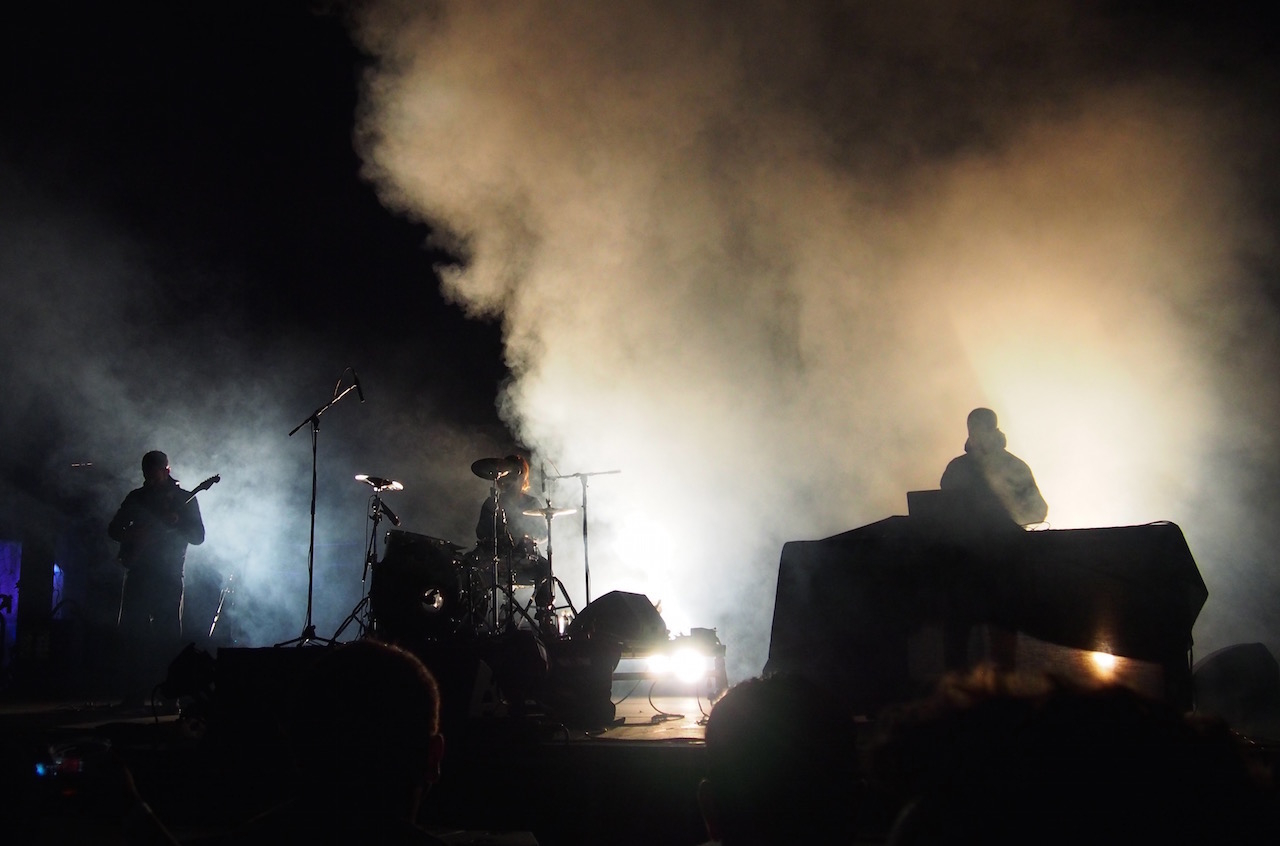- Unsound Toronto, the Canadian arm of the Polish avant-garde festival, is actually a festival within a festival, forming part of Luminato, a ten-day arts and culture showcase that takes place throughout the Canadian city. The most notable thing about the event is the venue, the Hearn Generating Station. Located about five miles from downtown on the eastern waterfront, the Hearn is a coal-fired power plant that has lain derelict for years. In truth, neither words nor pictures do justice to the scale of the thing—it is colossal, without doubt the largest free-standing structure I've ever been inside. (It was accurately described as "Pharaonic.")
Night one began with Kara-Lis Cloverdale's crystalline tones, carried by the Hearn's unparalleled acoustics. Soon after came Raime, whose latest iteration features live guitar and drums, incorporating the visceral post-punk textures that first emerged in their side project, Moin. By pairing electronic dub rhythms with angular guitars and live drumming, the London duo have approached a new sound but seem unwilling to fully commit to it. Something was missing: I found myself wishing they'd had a vocalist to tie it all together.
I headed to the side room to check Amnesia Scanner, whose short blasts of cut-up breakbeats, paired with hoover stabs and the occasional disembodied vocal, rang out like a rave nightmare in the claustrophobic concrete box. Then came Sunn O))). The US group began accompanied by perennial vocal collaborator Attila Csihar, who muttered, gibbered, moaned and chanted, before unleashing an onslaught of guitar and bass synthesizer so heavy I could feel my ribcage vibrating. At points, the bass pressure was so intense I had trouble breathing. It was beautiful, exquisite, excruciating and like nothing else. Nearly two hours later, they were done, and so was I. I stuck around for The Bug, who worked the main system with enormous bass rhythms set to hyperkinetic MCing from Flowdan and Miss Red ("Poison Dart" was a highlight), but I left the night feeling like I'd been to a Sunn O))) concert, for better or worse.
Night two got off to a great start. Alessandro Cortini's droning synthesizer oscillations were followed by Roly Porter, who played one of my favorite sets of the weekend. His celestial, coruscating sounds synced perfectly with visual artist MFO's intense cosmic imagery. Soon, it was 1 AM, which was my cue to head to the side room and dance. I was greeted with a line of people at least a hundred-strong, and it took me about 30 minutes to make my way in, with another 15 spent buying beer inside. What little I caught of Aurora Halal's set was brilliant, full of mind-warping, psychedelic techno. Ancient Methods played live after her, and their EBM-flavored jams sounded just as good through the speakers as they do on record. Around 3:15 AM, Orphx took the stage. Despite serious sound snafus, Rich Oddie and Christina Sealey proved why they might be the best live techno act in the game—it's just a shame they were unceremoniously cut off a little before 4 AM, less than an hour into their set.
Unsound Toronto was a remarkably ambitious festival that attempted to connect the dots between large-scale experimental music performances and uncompromising dance music. It succeeded, for the most part, but a number of jarring missteps prevented it from reaching its full potential. The side room in particular suffered from logistical and operational errors, including long lines, no bathrooms (which meant another wait for re-entry) and subpar sound. The Hearn also felt underused: visuals were conspicuously lacking (with the notable exception of MFO) and art installations seemed like afterthoughts.
But despite this, I had an excellent time, and I applaud Unsound (and Luminato) for setting their sights high. Hopefully next year they'll allow more of the warehouse rave culture that is part and parcel of Unsound's DNA to creep in. If that happens, Unsound Toronto will be unmissable.
Photo credits /
Jonathan Castellino
Dan Letson
